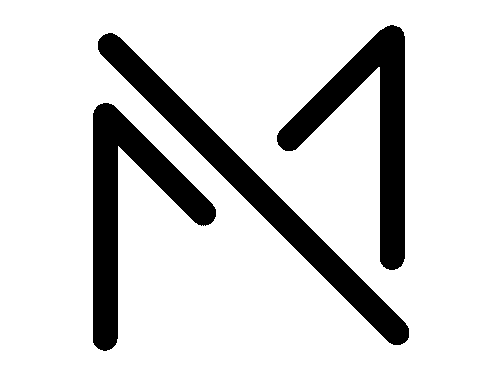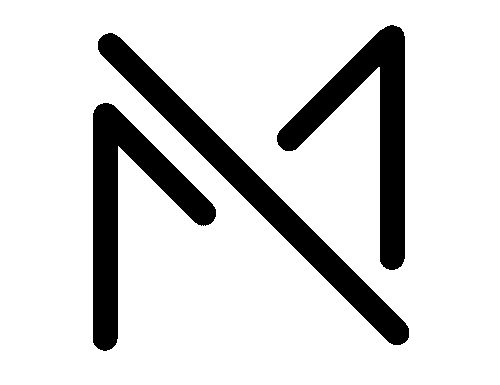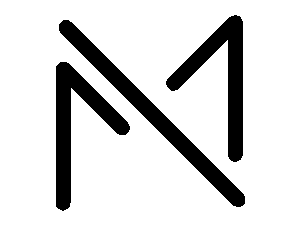A marketer researches the market, crafts strategy, plans campaigns, produces creative, ships it across channels, measures results, and iterates week after week. Marketers Quest (MQ) turns that whole job into a repeatable, data-driven system. It pulls live signals from your market, translates them into a channel-ready plan, generates on-brand creative, schedules distribution, and then learns from performance to recommend what to do next. If a single marketer is the engine of day-to-day growth, MQ is that engine, automated, always-on, and built to scale from one brand to many.
1) Market research without the research drag
A working marketer spends a big chunk of time figuring out what’s worth making right now. MQ automates that scan.
- Trend Analysis Tool gives you real-time topics and formats rising by region and platform (India, UK, US; Instagram, TikTok, YouTube, LinkedIn, X). It’s not a static “ideas list”, it’s a live radar that refreshes daily so you ride momentum instead of guessing.
- Hashtag Research (region + industry) applies explicit velocity thresholds (e.g., daily/3-day/7-day mentions) to label tags as “about to trend,” “trending,” or “evergreen.” That’s a marketer’s discovery work, quantified.
- Competitor Benchmarking finds six relevant rivals (three near peers, three leaders) and analyzes their last 25 posts: hooks, formats, cadence, engagement, and over-performing hashtags. You see what’s working right now, not last quarter.
- Trending Audio by Region surfaces sounds with lift for Reels/Shorts/TikTok so you can pair the right creative with the right audio at the right moment.
Instead of spending days cobbling this together, you open MQ and start with strategic clarity.
2) Strategy and planning that actually ship
Marketers turn insights into a plan. MQ makes that step instantaneous, and objective-driven.
- AI Social Media Calendar takes your goal (leads, reach, followers, engagement, sales), platforms, industry, frequency, and an optional 1–2-line brand description, then proposes a weekly/monthly schedule. Each slot includes a concept, angle, format (carousel, reel, short, static), and a suggested posting window.
- Goal-aware logic changes the creative approach: lead-gen skews toward proof + urgency + clear CTAs; growth skews toward shareability + saves; community skews toward prompts and conversation.
- Channel-native planning respects platform norms – caption length, link behavior, hashtags, and visual framing – so you’re not forcing one idea to fit five places.
- Brand Profiles store voice, persona, taboo phrases, disclaimers, and compliance notes. The plan and every later generation inherit these rules, keeping output consistent.
This is what a marketer’s “content ops doc” should be done in minutes, not meetings.
3) Creative production at the speed of buttons
A marketer’s day is also writing and designing. MQ makes that a “writer’s room + studio” you open on command.
- Caption Generator (five variants) delivers on-brand options for each post, playful, premium, minimalist, educational, direct-response, etc. Pick one, blend two, or A/B them.
- Post/Reel/Video Direction transforms the idea into a shoot/ edit plan: shot lists, transitions, on-screen text, pacing. It’s the practical direction marketers usually write in briefs.
- Visual Content Creator gives you drag-and-drop layouts; AI Image Generation fills in missing visual assets in seconds (or you drop in photos and MQ designs around them).
- Platform-aware rewrites tailor the same concept for Instagram, LinkedIn, X, YouTube Community, TikTok, automatically adjusting tone and constraints.
Instead of “waiting on creative,” you produce it on demand, without blowing up your day or budget.
4) Distribution and execution without chaos
Shipping consistently is where many teams slip. MQ treats distribution like a first-class job.
- Scheduling flows straight from the calendar. You can queue weeks at a time, then make real-time swaps if a trend breaks.
- Hashtags + Audio recommendations attach at publish time, not as an afterthought.
- Production states (draft → ready → scheduled → posted) keep everyone aligned; you always know what’s blocked and what’s live.
- A/B hooks and caption tests are a checkbox, not a project. MQ logs the winner and builds a pattern library for your brand.
This is the operational rhythm a strong marketer enforces, now enforced by software.
5) Optimization loops that never sleep
A marketer’s edge is turning results into better decisions next week. MQ bakes that loop into every feature.
- Best Time to Post recommendations update with your data.
- Optimization Tips translate metrics into immediate next steps, “shorten the opening clause,” “lead with benefit before feature,” “swap carousel → 15s reel for this theme,” “front-load on-screen text in first 2 seconds.”
- Weekly & Monthly PDF Reports deliver the what/why/what-next you’d normally build in slides. Stakeholders get a crisp story; you get your time back.
- Reusable templates emerge from winners automatically (hooks, carousel structures, CTA frameworks). MQ turns success into a library the whole team can re-use.
It’s not just analytics; it’s analytics embedded in your publishing muscle.
6) Governance so quality doesn’t drift
Good marketers protect the brand while shipping volume. MQ hard-codes guardrails.
- Voice & compliance live in Brand Profiles and are applied to every generation.
- Approval flows let you insert manual review for high-stakes posts while letting routine content sail through.
- Audit trail shows who generated what, when, and with which constraints, useful for agencies and regulated categories.
- Data retention by tier (e.g., 6/12/36 months) aligns ops with cost and policy.
That’s brand safety without slowing down.
7) Economics: why this can replace a marketer for day-to-day work
Most daily marketing tasks are structured, repeatable, and measurable. That’s exactly where software shines.
- Speed: Research in minutes, not days. Calendars instantly. Creative variants on tap. Reports auto-generated.
- Cost control: You pay plans or per-action wallet debits tied to tiny variable costs (tokens/images), not unpredictable hours. You can forecast spend across brands.
- Scale: One marketer with MQ can run what used to take a small team, especially across multiple regions or client accounts.
If your reality is “we must publish four to eight times a week across channels and keep improving it,” MQ is a credible replacement for the function of a marketer, even if you still bring a human in for special projects.
8) Where humans still shine (and how MQ boosts them)
None of this means humans are obsolete. It means you reserve human judgment for the few things software can’t do as well:
- Positioning and narrative leaps (brand story, category design, partnerships, PR).
- Cross-functional coordination (sales, product, CX).
- Nuanced cultural plays where a misread carries reputational risk.
- Hero creative for flagship launches.
MQ becomes the force multiplier: it handles the grind (research, planning, routine creative, reporting), so human marketers focus their talent where it moves the brand, not just the metrics.
9) A week in the life, with and without MQ
Without MQ: Monday is catch-up on trends and competitors; Tuesday is calendar; Wednesday is copy and visuals; Thursday is approvals; Friday is reporting. You might publish, but you lose cycles to hunting data, wrangling formats, and making decks.
With MQ:
- Monday 9:00 – Run Trend Analysis for UK/US, pull Competitor scan; insights surface in minutes.
- 9:20 – Generate the week’s AI Calendar aligned to engagement + follower growth goals.
- 9:35 – For each slot, click 5 captions, hashtags, and Reel direction; generate or drop visuals in the Visual Content Creator.
- 10:30 – Schedule everything; mark two posts for A/B hook tests; attach trending audio by region.
- End of week – PDF report hits inbox: what won, why, and 3 actions for next week. MQ already proposes next week’s calendar with those learnings applied.
Same outcomes, radically less overhead.
10) Agencies and multi-brand teams: scale without headcount
For agencies, MQ turns your process into a productized machine.
- Standardize Brand Profiles and templates per vertical.
- Batch weekly trend pulls and competitor scans across all clients; clone calendars with local tweaks.
- Let juniors generate variants within guardrails; a senior approves high-stakes posts.
- Scheduled reports roll up client performance without manual deck work.
You grow margin without burning people out.
11) Why “alternative to a marketer” is more than writing captions
People often equate “AI for marketing” with auto-writing. MQ is broader: it’s a closed-loop operating system for marketing. It doesn’t just type. It decides what to make, creates it, ships it, and learns from it (across regions and platforms) while protecting brand standards and driving to goals. That’s the essence of a marketer’s job.
12) Practical limitations (and how MQ handles them)
- API availability/rate limits: MQ uses official APIs where available, respecting limits and caching results so insights remain stable. If a platform restricts certain data, MQ degrades gracefully (e.g., use public signals, historical caches).
- Data privacy: Brand Profiles and workspaces keep rules and outputs scoped; exports and audit logs support client reviews.
- Quality control: Approvals and templates ensure you don’t sacrifice taste for speed.
You get the velocity of automation without losing the confidence of craft.
13) The decision lens for leaders
Ask three questions to decide whether MQ can stand in for a marketer in your context:
- Cadence & breadth: Do you need to publish across multiple channels every week?
- Repeatability: Is 70–90% of your work structured (ideas → posts → variants → reports)?
- Optimization culture: Do you want to learn and improve weekly, not quarterly?
If yes, MQ is a sensible, scalable alternative to hiring more marketers for day-to-day production and performance, while still letting you invest in human expertise for brand-defining moments.
Bottom line: A marketer turns insight into output and output into growth. Marketers Quest operationalizes that cycle. It listens to the market, plans to your goals, generates on-brand creative, ships it across channels, and learns in public, so next week is smarter than the last. For founders, lean teams, and agencies, that makes MQ a practical alternative to a marketer for the work you have to do every single week, freeing your human talent to focus on the ideas and relationships only people can drive.












